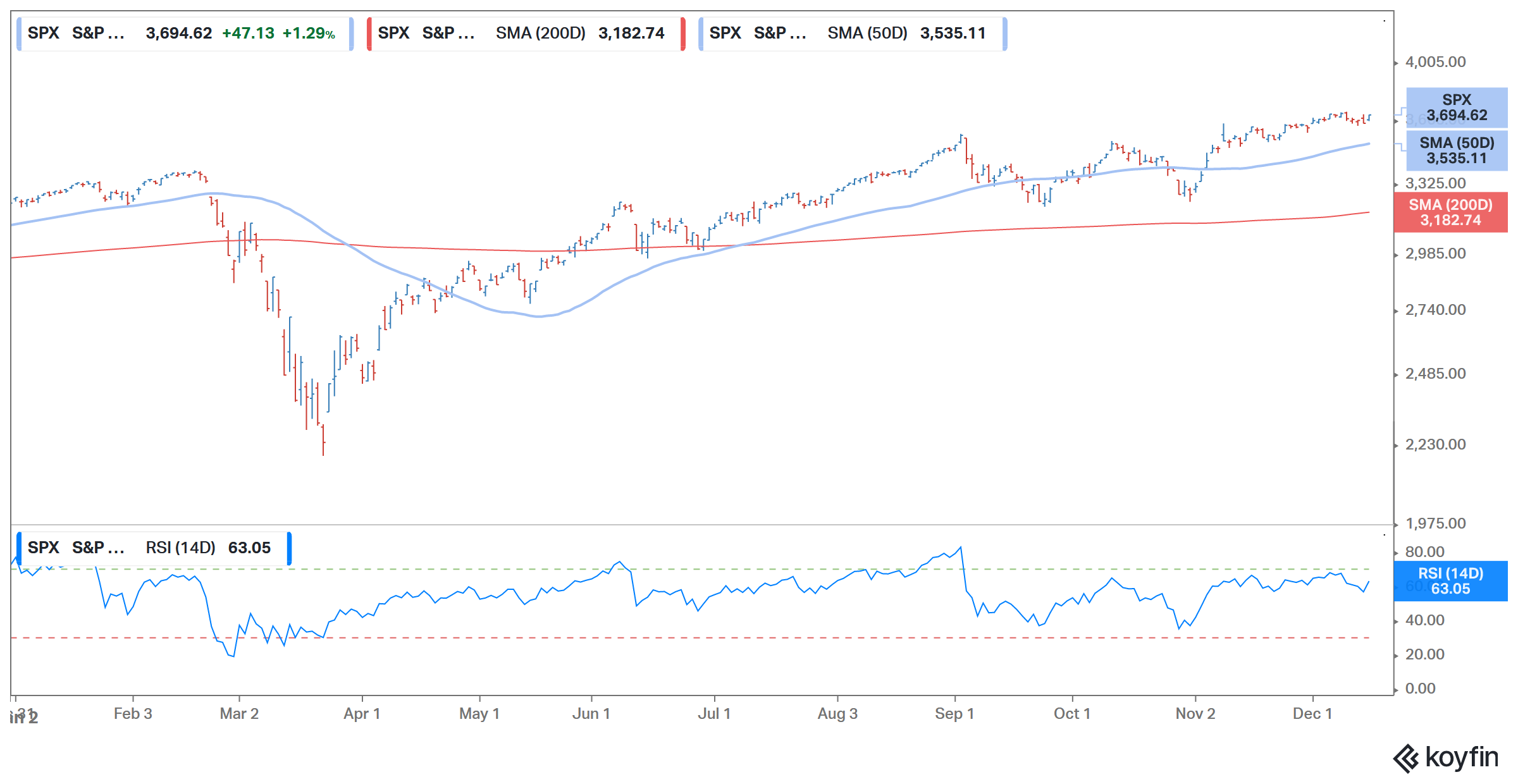S&P 500 2021 Target: What Are Brokerages Projecting?
U.S. stock markets had a good 2020 despite COVID-19’s economic fallout. What's the S&P 500's 2021 target according to brokerages?
Dec. 16 2020, Updated 8:22 a.m. ET

U.S. stock markets had a good 2020 despite COVID-19’s economic fallout. The Dow Jones, Nasdaq, and S&P 500 surged to record highs. As 2020 draws to a close, let’s look at what the S&P 500’s 2021 target is according to brokerages.
Global economic growth and earnings are expected to pick up in 2021 after the slump in 2020. Given this positive outlook, most brokerages have set an optimistic target for the S&P 500 in 2021.

The S&P 500's 2021 target
According to data compiled by FactSet, industry analysts expect the S&P 500 to close above 4,000 in 2021. Based on Dec. 15, 2020, closing prices, this would mean an upside of 8.2 percent for the S&P 500 in 2021. Some brokerages are more bullish than others.
S&P 500 forecast for 2021
Brokerages' 2021 forecasts for the S&P 500 are as follows:
- Oppenheimer expects the S&P 500 to hit 4,300. The brokerage suspended its S&P 500 target at 3,500 for 2020 in March amid uncertainty over the COVID-19 pandemic.
- JPMorgan Chase is among the most bullish brokerages and has forecast the S&P 500 rising to 4,200–4,600.
- Morgan Stanley has forecast the S&P 500 to be at 3,900.
- Goldman Sachs expects the S&P 500 to hit 4,300.
- Wells Fargo expects the bull market to continue in 2021 and forecasts the S&P 500 hitting record highs.
- Barclays expects the S&P 500 to hit 4,000.

What affected the S&P 500 in 2020?
The S&P 500 surged to a record high in 2020 and looks on track to deliver double-digit returns. Tech stocks, fiscal stimulus, and the Fed’s accommodative monetary policies helped U.S. stock markets during the year.
However, U.S. stocks diverged significantly in 2020. While cyclical stocks had a hard time due to COVID-19 lockdowns, stay-at-home stocks surged.
What to expect from the S&P 500 in 2021
According to estimates compiled by FactSet, in 2021, analysts see the highest potential in the S&P 500's consumer discretionary sector and the lowest potential in its energy subsector. While analysts were bullish on the energy sector as we entered 2020, the subsector was the weakest in 2020 due to the steep fall in crude oil prices.
As of Dec. 10, 2020, analysts' 2021 forecasts for the S&P 500 subsectors were as follows:
- Consumer discretionary: 14.3 percent.
- Real estate: 12.6 percent.
- Utilities: 12.3 percent.
- Healthcare: 12.9 percent.
- Communication services: 9.8 percent.
- Infotech: 8.9 percent.
- Consumer staples: 8.4 percent.
- Materials: 6 percent.
- Industrials: 5.5 percent.
- Financials: 3.5 percent.
- Energy: 2 percent.
What could impact the S&P 500 in 2021
While most brokerages see the S&P 500’s bull market extending into 2021, there are several factors that could determine the outcome. First, the consensus is that normal business activity will mostly resume in 2021. If the COVID-19 vaccine rollout does not go as expected, the S&P 500 could underperform.
Second, inflation may play a role. The Fed’s rate cuts boosted U.S. stock markets in 2020. If inflation rises, the Fed may be forced to rethink its accommodative monetary policy, and we could see a sell-off in markets.
Third, Tesla's addition to the S&P 500 may also bring some volatility in 2021. While Tesla stock soared over 600 percent in 2020, it may hit rocky territory in 2021 as investors weigh the company's growth outlook.

